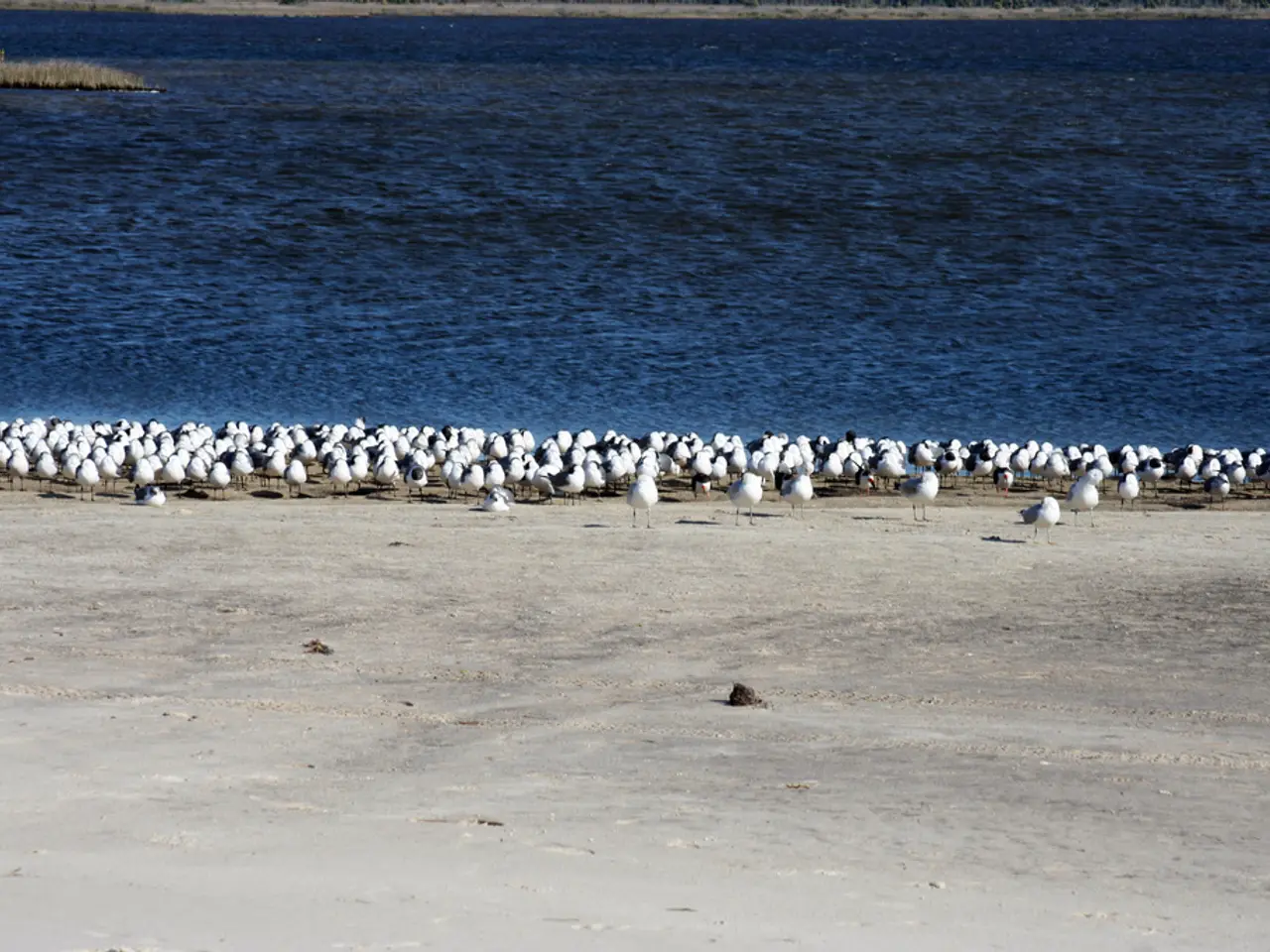Swimming safety in Victoria: Why inspecting water quality is essential before diving in
The Environment Protection Authority Victoria (EPA) is dedicated to ensuring the safety of Victoria's recreational waterways, including the 36 beaches along Port Phillip Bay and the Yarra River. The EPA's efforts involve regular water sampling, testing, and forecasting based on various environmental factors [1][3].
The EPA's monitoring regime includes weekly water sample collection by authorized officers and scientists to test for microbial contamination, chemicals, plastics, pesticides, and E. coli [1]. Using historical microbial data, rainfall observations and forecasts, light levels, and cloud cover, the EPA predicts water safety for swimming [3]. The water quality is determined using a traffic-light based system: green indicates the water is suitable for swimming, yellow may not be suitable, and red is not suitable [1][3].
In addition to regular sampling and scientific analysis, the EPA also provides real-time monitoring and incident response capabilities to detect any pollution events [1][3]. Results and forecasts are publicly communicated through websites, SMS alerts for poor water quality at specific beaches, and reports like the Beach Report and Yarra Watch Report Card [1][3].
When swimming, it's essential to avoid areas near stormwater drains and try not to swallow water during recreation [3]. The EPA also advises staying out of the water for up to 48 hours after heavy rain and floods [3]. Dogs should not be allowed to enter the water due to the additional risk to pets [3].
To find out the latest water quality in your area, visit the EPA website or sign up for alerts [3]. This summer, many beaches have been forecast to have a 'Fair' or 'Poor' rating due to recent floods in New South Wales and Victoria caused by La Niña, which carry pollutants, toxins, and contaminants [3]. E. coli, used as a microbial measure for water quality, can cause illnesses such as gastroenteritis and diarrhea [3].
Individual actions also play a significant role in maintaining water quality. It's important to be vigilant around water, know your swimming area, and avoid going in alone [3]. DIY car washes on concrete should be avoided, as the products will get washed into the stormwater system [3]. Water and waste should be properly disposed of to prevent it from ending up in the bay [3]. Small behaviors by individuals can have a significant cumulative impact on water quality [3].
Staying at an RACV Resort can be a good option when visiting a beach on the coast [2]. Rainfall produces runoff, which affects water quality in the bay [3]. The EPA recommends avoiding beach areas for up to 48 hours after heavy rain and floods [3]. It's crucial to cover cuts and scratches with waterproof bandages, wash your skin with soap after touching the water, and shower after swimming for health safety [2].
References:
- Environment Protection Authority Victoria. (n.d.). Water quality monitoring. Retrieved from https://www.epa.vic.gov.au/your-environment/water/water-quality-monitoring
- RACV. (n.d.). RACV Resorts. Retrieved from https://www.racv.com.au/travel/hotels-and-resorts
- Environment Protection Authority Victoria. (n.d.). Beach Report. Retrieved from https://www.epa.vic.gov.au/your-environment/water/beach-report
The EPA's scientific analysis and monitoring of water quality extend beyond microbial contamination to include the presence of chemicals, plastics, and pesticides, which are significant aspects of environmental science [1]. To further promote health-and-wellness and environmental-science consciousness among its community, the EPA advocates individual actions such as being vigilant, minimizing stormwater runoff, and disposing of waste properly, all of which contribute significantly to maintaining the water quality [3].




